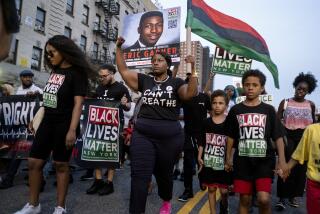Strokes Hit More in U.S. Than Believed, Study Finds
- Share via
ORLANDO, Fla. — Strokes hit about 200,000 more Americans a year than commonly believed, according to a new study that tried to correct previous research by looking at black neighborhoods instead of just well-to-do white communities.
The study suggests that about 700,000 Americans a year suffer strokes--or about 40% more than the usually accepted estimate.
The study’s authors said it more accurately reflects the nation’s ethnic diversity as well as the frequency of second and third strokes among survivors.
The additional 200,000 stroke victims are “three to four football stadiums full of people who are having strokes in this country every year,” said Dr. Joseph Broderick, describing the results Friday at a medical conference in Orlando. “That’s a lot of people.”
The current figure, adopted by the American Heart Assn. and others, holds that 500,000 Americans suffer new or recurring strokes each year.
*
This estimate is based on the Framingham Heart Study, which has followed the health of one virtually all-white, middle-class Boston suburb for almost 50 years. The only other long-running look at the incidence of stroke comes from Rochester, Minn., another affluent, overwhelmingly white community.
To come up with an estimate that more accurately reflects the racial and economic mix of the entire country, researchers from the University of Cincinnati looked at all the strokes recorded among the 1.3 million residents of the Cincinnati area in 1993.
The area’s black population (14%) and its median income ($31,000) are similar to those of the United States as a whole.
The study found 288 first-time strokes for every 100,000 people among the area’s blacks. When recurrent strokes were counted, there were 411 for every 100,000.
This compared with 179 first-time strokes per 100,000 people among the white residents of Rochester during the late 1980s.
Broderick said that when extrapolated nationally, his findings suggest that Americans suffer about 500,000 first-time strokes and 700,000 total strokes annually.
Dr. Philip Wolf of the Framingham study said that while he is not sure whether the new 700,000 estimate is correct, he believes the 500,000 figure is almost certainly too low, since it does not consider the higher toll of strokes on blacks or the elevated stroke risk among whites in the South.
*
Dr. Michael Walker of the National Institute of Neurological Disorders and Stroke said the new estimate should be a wake-up call of stroke’s importance. “I wouldn’t be a bit surprised if these numbers are confirmed,” he said.
While the risk of stroke is about the same for elderly blacks and whites, it is considerably higher for blacks than whites at younger ages. The reasons for this are thought to include the higher risk of high blood pressure among blacks, as well as the effects of smoking, obesity, poverty and possibly genetic differences.
Another study presented at the meeting by Thomas Taylor, a University of Iowa economist, used census data and other studies to calculate the number of strokes likely in the year 2050.
Assuming 400,000 first strokes annually now, this study projects that the total will rise to slightly more than 1 million in the next 50 years, even though the population is expected to grow only 50%.
The researchers said the aging of the population will be responsible for the increasing numbers. However, the projection also assumes no gains in preventing strokes.





